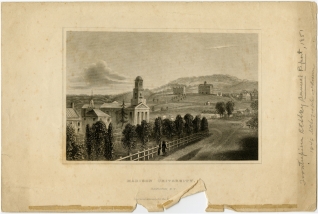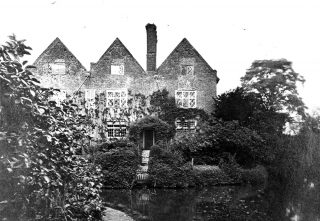Society, reported that the churches were alarmed and the situation became so grave that Schmidt was urged to seek a non-theological chair at some other institution.
In response to questions from Samuel Colgate, President of the Education Society, Professor Schmidt made a detailed statement to Mr. Colgate of his views which he defended as in accord with those usually held by Baptists. The heart of the matter as Schmidt saw it was
whether there is room in the Baptist denomination for a consistent application of scientific principles in the interpretation of the Bible and for progressive theology to which it invariably leads and what is the true conception of the duty of a theological professor in a Baptist seminary.*
Dean Burnham, who seems to have kept to the sidelines at first, threatened to resign if Schmidt remained on the faculty. He considered his associate’s views more Unitarian than Baptist and asserted that the real issue was whether the Seminary was to have a faculty who taught “the generally accepted Baptist truth.”
He did concede, however, that in a college the professors might teach “truth as by their studies, they come to believe it to be.”**
Matters came to a climax at the June 1896 meetings of the University and Education Society Trustees. Both Boards, in accordance with their Compact of 1893, appointed a joint committee to recommend action on the Education Society Board’s request that Schmidt be dismissed for teachings which tended “to weaken the confidence of young men in the Scriptures and to alienate the sympathy of our churches from the institution.”
The committee promptly recommended that his services be terminated as soon as possible, James C. Colgate, alone of the committee, protesting on the ground that no proper cause of action had been presented. The Education Society’s Board at once unanimously approved the Committee’s recommendation. Since the University Board had already adjourned, Mr. Colgate, as Secretary, informed Schmidt that the University Board was certain to dismiss him at its next meeting in December and advised him to find a new position. At Cornell, meanwhile, President Jacob G. Schurman, himself a Baptist and aware of the Colgate situation, had persuaded one of his
*Letter, Nathaniel Schmidt to Samuel Colgate, May 25, 1895.
**Letter, Dean Sylvester Burnham to Samuel Colgate, February 5, 1896.






